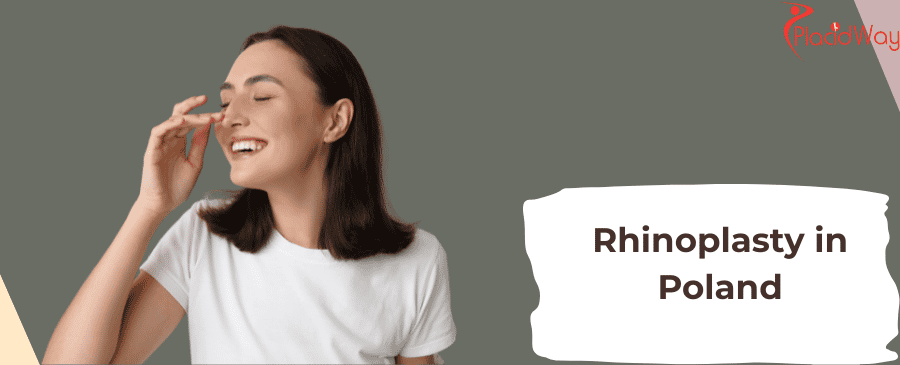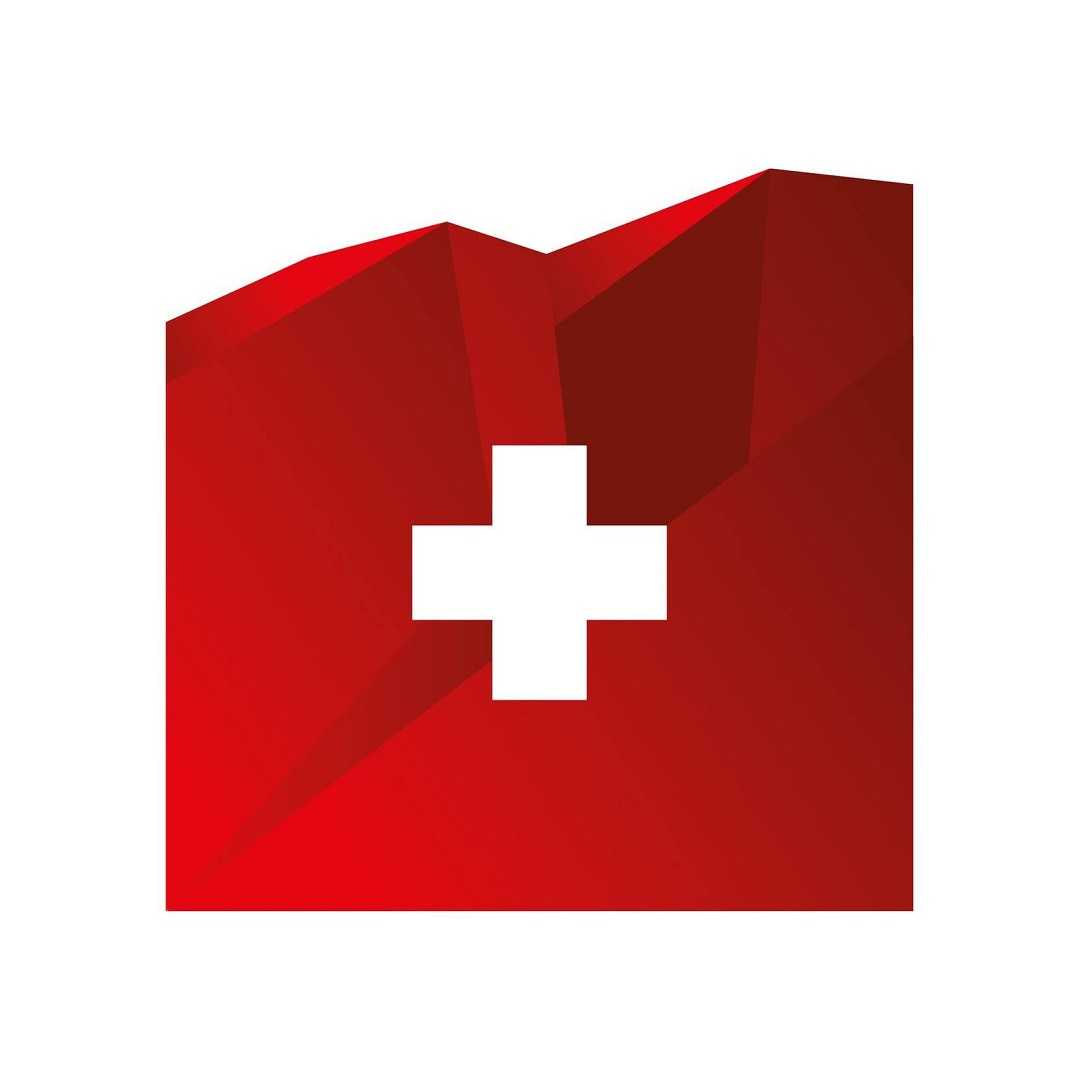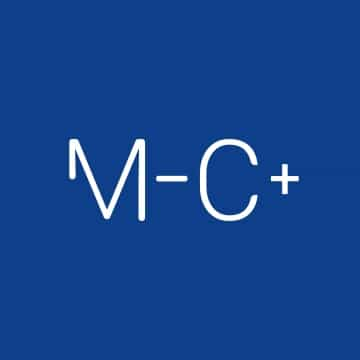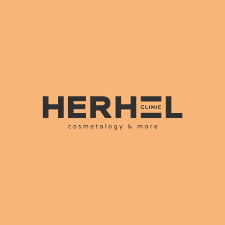How Much Does a Nose Job Cost in Poland? Everything You Need to Know

Considering rhinoplasty, also known as a nose job, is a significant decision. If you're looking for high-quality care at a more accessible price point, Poland has become an increasingly popular destination for cosmetic surgery. Known for its modern clinics, experienced surgeons, and competitive pricing, Poland offers an attractive option for international patients seeking nose reshaping. This guide will provide a detailed breakdown of rhinoplasty costs in Poland, including what influences the price, what's typically included, and what you can expect from the process. We'll answer the most common questions to help you make an informed choice about your rhinoplasty journey.
How much does rhinoplasty cost in Poland?
The cost of rhinoplasty in Poland is a key factor attracting many international patients. While prices can vary, a general range for a nose job is between €2,650 and €7,000, which translates to roughly $3,000 to $7,500 USD (as of current exchange rates in July 2025). This makes Poland a significantly more affordable option compared to countries like the UK, USA, or Germany, where similar procedures can cost upwards of €6,000 to €15,000.
For more specific types of rhinoplasty, you might find:
- Minor cosmetic correction or nose tip plasty: Starting from approximately €2,950 (£2,680).
- Full rhinoplasty: Often in the range of €4,500 to €5,000.
- Revision rhinoplasty (correcting a previous nose job): Can be more expensive due to increased complexity, sometimes reaching €6,000 to €7,000 or more, especially if a rib graft is required.
These prices usually include the surgeon's fee, anesthesia, and a hospital stay for one night, along with initial check-ups. However, it's crucial to confirm all inclusions with your chosen clinic.
Why is rhinoplasty more affordable in Poland compared to Western Europe or the USA?
Several factors contribute to the lower cost of rhinoplasty in Poland without compromising on quality:
- Lower Operational Costs: The general cost of living and operating a medical facility in Poland, including staff salaries, utilities, and rent, is considerably lower than in many Western European countries or the USA. This allows clinics to offer competitive prices.
- Favorable Exchange Rates: The Polish Zloty (PLN) often has a favorable exchange rate against major foreign currencies (EUR, GBP, USD). This means that for international patients, their money goes further in Poland.
- Competitive Market: Poland has a thriving medical tourism sector with many clinics specializing in cosmetic surgery. This high level of competition encourages clinics to keep their prices attractive while maintaining high standards to draw in patients.
- Government Support for Medical Tourism: The Polish government, similar to some other countries, recognizes the economic benefits of medical tourism and may have policies that support the growth of this sector, indirectly contributing to more accessible pricing.
It's important to remember that lower costs don't equate to lower quality. Many Polish surgeons are highly skilled, internationally trained, and work in modern, well-equipped facilities.
What does the rhinoplasty cost in Poland typically include?
When inquiring about rhinoplasty costs in Poland, most clinics will provide a comprehensive quote that typically covers the following key elements:
- Surgeon's Fee: The professional fee for the plastic surgeon performing your rhinoplasty. This is a significant portion of the total cost and reflects their expertise and experience.
- Anesthesia Fees: The cost of the general anesthesia administered during the procedure and the services of the anesthesiologist.
- Operating Room Charges: Fees for the use of the surgical facility, its equipment, and medical supplies.
- Hospital Stay: Typically includes a 1-night stay in the clinic or hospital for post-operative monitoring.
- Initial Post-operative Care: This often covers follow-up consultations with the surgeon, removal of splints or stitches, and dressing changes during your immediate recovery period in Poland.
Many clinics that cater to international patients also offer all-inclusive packages. These can be very convenient and may bundle additional services such as:
- Pre-operative blood tests and medical evaluations.
- Airport transfers.
- Accommodation (e.g., hotel stay for a specified number of nights).
- Interpreter services.
- Post-operative medications (e.g., pain relievers, antibiotics).
- Extended follow-up care.
Always ask for a detailed breakdown of the costs to understand exactly what is included and if there are any potential additional fees.
What factors influence the total cost of rhinoplasty in Poland?
Beyond the basic inclusions, several specific factors can cause the price of rhinoplasty to vary:
- Complexity of the Procedure: This is arguably the biggest factor.
- Minor corrections (e.g., tip plasty): Will be less expensive.
- Full rhinoplasty (reshaping bone and cartilage): Commands a higher price.
- Revision rhinoplasty: Often the most expensive due to the intricate nature of correcting previous surgery and potential need for cartilage grafts (e.g., from the rib or ear).
- Septoplasty (for breathing issues) combined with aesthetic rhinoplasty: Will increase the overall cost.
- Surgeon's Experience and Reputation: Highly sought-after surgeons with extensive experience, specialized training, and a strong portfolio of successful outcomes may charge higher fees. Their expertise often justifies a premium price.
- Clinic's Location and Facilities: Clinics in major cities like Warsaw or Krakow, especially those with luxurious amenities or cutting-edge technology, might have higher prices than those in smaller towns or less prominent facilities.
- Type of Anesthesia: While general anesthesia is standard, specific types or prolonged duration can influence costs.
- Implant or Graft Material: If synthetic implants or cartilage grafts (from your own body, like rib or ear cartilage) are needed, this can add to the material and procedural costs.
- Additional Services: As mentioned, packages that include accommodation, airport transfers, interpreter services, and extensive post-operative care will have a higher upfront price but can offer overall value.
Is an all-inclusive rhinoplasty package in Poland a good deal?
For international patients, all-inclusive packages can be an excellent option when considering rhinoplasty in Poland. Here's why they are often considered a good deal:
- Cost-Effectiveness: Bundling services like surgery, accommodation, and transport often results in a lower total price than arranging each component separately. Clinics can often secure better rates with partner hotels and transport providers.
- Convenience and Reduced Stress: All the logistics are handled for you, from airport pick-up to hotel bookings and clinic appointments. This significantly reduces the stress and planning required, especially when traveling to a new country.
- Transparency: Reputable clinics offering all-inclusive packages typically provide a clear breakdown of what's included, helping you avoid unexpected costs.
- Peace of Mind: Knowing that all your essential needs are pre-arranged allows you to focus solely on your recovery and the successful outcome of your surgery.
However, it is crucial to thoroughly review the details of any package. Ensure it covers all your expected needs and clarify any services that might not be included. Compare offers from several reputable clinics to find the best fit for your budget and preferences.
How does the cost of rhinoplasty in Warsaw compare to other Polish cities?
While Poland generally offers affordable rhinoplasty, there can be slight variations in cost between cities:
- Warsaw: As the capital and largest city, Warsaw has the highest concentration of clinics and experienced surgeons. This creates a competitive market, but prices for premium clinics or highly renowned surgeons might be at the higher end of the Polish spectrum, typically in the range of €4,000 to €7,000.
- Krakow: Another popular medical tourism destination, Krakow also boasts excellent clinics. Prices here are often comparable to Warsaw but might sometimes be slightly lower, perhaps from €3,800 to €6,500.
- Jelenia Góra: Home to some well-known clinics that cater to international patients, Jelenia Góra can offer very competitive prices, sometimes starting from €2,650 for a full rhinoplasty, making it a potentially more budget-friendly option.
- Other Cities (e.g., Wroclaw, Gdansk): While also having reputable clinics, these cities may have slightly lower average costs due to lower operational expenses and less international patient traffic compared to Warsaw or Krakow.
Regardless of the city, the overall value for money in Poland remains strong. It's always recommended to obtain specific quotes from clinics in your preferred location to compare accurately.
What types of rhinoplasty are available in Poland, and do they affect the cost?
The type of rhinoplasty chosen significantly impacts the complexity of the surgery and, consequently, the cost. Polish clinics offer various techniques:
- Open Rhinoplasty:
- Method: Involves a small incision on the columella (the strip of skin between the nostrils) to lift the skin and expose the underlying bone and cartilage. This allows the surgeon maximum visibility and precision.
- Cost Impact: Often slightly more expensive than closed rhinoplasty due to the extensive work involved and longer surgical time.
- Closed Rhinoplasty:
- Method: All incisions are made inside the nostrils, leaving no visible external scars. The surgeon works through small openings, which can be more challenging for extensive reshaping.
- Cost Impact: Can sometimes be marginally cheaper than open rhinoplasty as it's considered less invasive, though this isn't always a significant difference.
- Tip Plasty (Nose Tip Reshaping):
- Method: Focuses solely on reshaping the nasal tip, without altering the bone structure of the bridge. This is suitable for minor corrections.
- Cost Impact: Generally the least expensive type of rhinoplasty due to its limited scope.
- Revision Rhinoplasty:
- Method: Performed to correct or improve the results of a previous rhinoplasty. This can be highly complex due to scar tissue, altered anatomy, or depleted cartilage. Often requires cartilage grafts (from the septum, ear, or rib).
- Cost Impact: The most expensive type of rhinoplasty, as it requires exceptional surgical skill, more time, and potentially additional procedures for grafting.
- Septorhinoplasty:
- Method: Combines aesthetic rhinoplasty with septoplasty (correction of a deviated septum) to improve both nasal appearance and breathing function.
- Cost Impact: Higher than aesthetic-only rhinoplasty because it addresses both cosmetic and functional issues.
During your consultation, your surgeon will recommend the most appropriate technique based on your specific needs and desired outcome, which will directly influence the final price.
Are there any hidden costs associated with rhinoplasty surgery in Poland?
Reputable clinics in Poland are generally very transparent with their pricing, especially when dealing with international patients. However, it's always wise to be aware of potential expenses that might not be included in the initial quote or package:
- Pre-operative Medical Tests: While some all-inclusive packages cover basic blood tests, more extensive medical evaluations (e.g., ECG for older patients, specialist consultations) might be an additional cost if required. Some clinics might expect you to have these done in your home country.
- Specific Medications: Standard pain relievers and antibiotics are usually included, but any specialized or long-term medications you might need could be an extra expense.
- Travel Insurance: This is a crucial, often overlooked, cost. Medical travel insurance can cover unforeseen circumstances such as flight delays/cancellations, or medical emergencies that might necessitate an extended stay or additional care.
- Extended Accommodation: If your recovery requires you to stay longer than the days covered in an all-inclusive package, you'll need to budget for additional hotel nights.
- Personal Expenses: Don't forget to account for meals (beyond those provided by the clinic/hotel), local transportation for non-medical reasons, sightseeing, and souvenirs.
- Revision Surgery: While rare, if complications arise or you are not satisfied with the aesthetic outcome, clarify the clinic's policy on the cost of potential revision surgery. Some clinics offer a warranty period for minor adjustments, but major revisions might incur new fees.
Always ask for a detailed cost breakdown and ensure all your questions about inclusions and exclusions are answered before you commit to a clinic.
How long should I plan to stay in Poland for a rhinoplasty procedure?
A typical timeline for rhinoplasty in Poland, including travel, would be:
- Day 1: Arrival and Initial Consultation: Arrive in Poland, settle into your accommodation. Your first in-person consultation with the surgeon will usually take place, along with any necessary pre-operative tests.
- Day 2: Surgery: The rhinoplasty procedure is performed. You will typically stay overnight in the clinic.
- Day 3-7: Initial Recovery and Follow-ups: The first few days will involve rest, managing swelling and bruising. You'll have follow-up appointments, often for dressing changes and monitoring. A splint (internal and/or external) will likely be in place.
- Day 7-10: Splint Removal and Final Check: Around 7 to 10 days post-surgery, the external splint is usually removed. The surgeon will perform a final check and give you instructions for continued at-home care before you are cleared to fly.
Therefore, a total stay of 7 to 10 days is generally recommended. This allows sufficient time for the immediate post-operative healing, removal of the splint, and for the surgeon to ensure your initial recovery is progressing well before you return home. Some patients might choose to stay slightly longer to enjoy a bit of tourism after the critical recovery period.
What is the recovery timeline for rhinoplasty, and does it impact the cost?
The recovery from rhinoplasty is a gradual process:
- First Week (Days 1-7): This is when swelling, bruising around the eyes and nose, and discomfort are most prominent. A splint will be worn. You'll need significant rest, keep your head elevated, and avoid strenuous activities.
- Weeks 2-4: Most significant bruising should subside, and a good portion of the initial swelling will decrease. The splint is typically removed around day 7-10. You can usually return to light social activities and work, although your nose will still look swollen to you.
- Months 1-3: Much of the noticeable swelling will have resolved, and you'll start to see more of your new nose shape. However, fine swelling, especially at the tip, will persist. Strenuous exercise can usually be resumed gradually.
- Months 6-12 (and beyond): The final results slowly emerge as all the subtle swelling dissipates. This can take up to a year, or even longer for revision cases or very thick skin.
The recovery timeline doesn't directly impact the surgical cost itself, as post-operative care within the immediate recovery period is usually included. However, it can affect your overall travel expenses if you need to extend your stay in Poland, or if you need to take additional time off work for your recovery once you return home. It's important to have realistic expectations about the recovery period and plan accordingly.
Is rhinoplasty in Poland safe?
The safety of rhinoplasty in Poland is a primary concern for patients traveling for medical procedures. Fortunately, Poland has a strong reputation in medical tourism, and many of its clinics and surgeons adhere to high international standards:
- Accreditation and Standards: Many top Polish clinics are accredited by national and international organizations, indicating they meet strict quality and patient safety protocols. They often comply with EU medical directives.
- Experienced Surgeons: Poland has a significant number of highly qualified and experienced plastic surgeons, many of whom have extensive training from leading institutions both in Poland and abroad. They often have years of experience specifically in rhinoplasty.
- Modern Facilities: Clinics catering to international patients are typically equipped with state-of-the-art technology, modern operating theaters, and comfortable recovery rooms, comparable to facilities in Western Europe.
- Quality of Materials: Reputable clinics use high-quality, approved materials and equipment for all procedures.
As with any surgical procedure, there are inherent risks (e.g., infection, bleeding, adverse reaction to anesthesia, unsatisfactory results). However, by thoroughly researching clinics, verifying surgeon credentials, and communicating openly with your medical team, you can significantly minimize these risks and ensure a safe and successful outcome for your rhinoplasty in Poland.
What qualifications should I look for in a rhinoplasty surgeon in Poland?
Choosing the right surgeon is the most critical step for a successful rhinoplasty. Here's what to look for:
- Board Certification: Ensure the surgeon is board-certified by the Polish Society of Plastic, Reconstructive and Aesthetic Surgeons (PTChPRiE) or an equivalent recognized international board. This confirms they have met rigorous standards of training and expertise.
- Specialization and Experience: Look for a surgeon who specializes in facial plastic surgery and has extensive experience specifically with rhinoplasty procedures. Ask about the number of nose jobs they perform annually and their experience with cases similar to yours.
- Before-and-After Portfolio: Review the surgeon's portfolio of previous rhinoplasty patients. This will give you a clear idea of their aesthetic style and the quality of their results. Look for outcomes that align with your desired natural appearance.
- Patient Reviews and Testimonials: Check independent online reviews and testimonials from previous patients. This can provide valuable insights into the surgeon's patient care, communication, and overall satisfaction levels.
- Communication Skills: It's essential that you can communicate effectively with your surgeon, especially regarding your aesthetic goals and any concerns. Many Polish surgeons and clinics have excellent English-speaking staff.
- Clinic Affiliation: Verify that the surgeon operates in an accredited and reputable clinic or hospital that adheres to high safety and hygiene standards.
- Consultation: A thorough pre-operative consultation, ideally via video call initially, is crucial. The surgeon should listen to your goals, assess your facial anatomy, and provide a realistic assessment of what can be achieved.
What are the alternatives to surgical rhinoplasty and their costs in Poland?
For individuals who might not be ready for surgical rhinoplasty or seek less invasive options, Poland offers alternatives:
- Non-Surgical Rhinoplasty (Liquid Nose Job with Dermal Fillers):
- What it is: Injectable dermal fillers (usually hyaluronic acid-based) are used to temporarily reshape the nose, smooth out bumps, lift the tip, or add volume to certain areas. It's a quick, in-office procedure with minimal downtime.
- Cost in Poland: Significantly less expensive per session than surgical rhinoplasty, typically ranging from €300 to €800, depending on the type and amount of filler used.
- Longevity: Results are temporary, usually lasting 6 to 18 months, requiring repeat treatments to maintain the effect. This adds to the long-term cost if pursued indefinitely. It's important to note that this method can only add volume, not reduce the size of the nose.
- Fat Transfer to the Nose:
- What it is: Autologous fat (fat harvested from your own body via liposuction) is processed and then injected into areas of the nose to add volume or fill in depressions.
- Cost in Poland: Generally more expensive than fillers, as it's a minor surgical procedure involving liposuction, often ranging from €2,500 to €4,000.
- Longevity: A portion of the transferred fat can survive permanently, offering a longer-lasting result than synthetic fillers, though the exact amount of fat retention can vary.
These alternatives are suitable for specific, less dramatic corrections and provide temporary or semi-permanent results. Your surgeon will discuss if these options are appropriate for your aesthetic goals during your consultation.
If you are considering rhinoplasty in Poland or any other medical procedure abroad, exploring options through platforms like PlacidWay can provide you with comprehensive information, connect you with reputable clinics, and help you navigate the entire medical tourism journey.


.png)














Share this listing